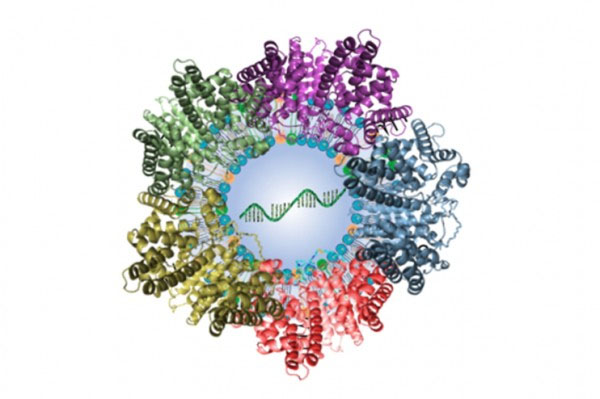Lipid Nanoparticles And Their Crucial Role in Nanomedicine
Definition: Lipid nanoparticles (LNPs) stand at the forefront of nanomedicine, serving as a cutting-edge delivery system for therapeutic molecules, especially RNA-based treatments. Evolving from earlier liposome technology, LNPs are composed of biocompatible lipids, and have catalyzed significant advancements in gene therapy and mRNA vaccine development.

Detailed Composition and Their Roles
LNPs consist of ionizable lipids, which are critical for encapsulating RNA and enabling cellular uptake. Helper lipids contribute to the structural integrity and fusion with cell membranes. Cholesterol enhances the fluidity and stability of the nanoparticle, facilitating its fusion with cellular membranes. Polyethylene glycol (PEG)-lipids are included to prolong the circulation time by preventing opsonization (evading the immune system) and immune recognition, thereby allowing LNPs to reach their target cells more effectively.
It's important to note that liposomes, a precursor to LNPs, have a similar basic structure. However, they typically lack the complexity of ionizable lipids for efficient encapsulation and cellular uptake, and they are often not PEGylated to extend circulation time. These differences limit the capabilities of liposomes compared to LNPs.
Functionality and Mechanism
LNPs encapsulate therapeutic RNA or DNA, safeguarding them against enzymatic degradation. Their delivery to target cells is facilitated through endocytosis. In the endosome, ionizable lipids respond to the acidic environment by altering their charge, which disrupts the endosomal membrane and releases the therapeutic nucleic acids into the cell's cytoplasm.
Advantages and Versatility
- High Delivery Efficiency: Their ability to deliver nucleic acids efficiently across various cell types, including those traditionally difficult to transfect, marks LNPs as a preferred delivery vehicle in therapeutics.
- Biocompatibility and Safety: LNPs are made from materials that are generally safe and well tolerated by the body, minimizing adverse effects.
- Protective Encapsulation: They provide a protective environment for nucleic acids, enhancing the stability and efficacy of the encapsulated therapeutics.
- Targeted Delivery: LNPs can be engineered to target specific tissues or cell types, increasing the precision and effectiveness of therapeutic interventions.
Applications in Gene Therapy, Cancer Therapy and Beyond
LNPs are instrumental in delivering mRNA vaccines, such as those developed for COVID-19 by Pfizer-BioNTech and Moderna, showcasing their pivotal role in rapid vaccine deployment. Beyond vaccines, LNPs are exploring the frontier of gene therapy, targeting genetic disorders like cystic fibrosis and Duchenne muscular dystrophy by delivering gene-editing tools, including CRISPR-Cas9, directly into affected cells.
In cancer therapy, lipid nanoparticles (LNPs) are revolutionizing treatment approaches by offering a versatile platform for targeted delivery of chemotherapeutics, small interfering RNA (siRNA), and mRNA-based cancer vaccines. Their ability to encapsulate and protect therapeutic molecules enables the direct targeting of tumor cells while minimizing side effects on healthy tissues. LNPs can be engineered to recognize specific cancer cell markers, ensuring that the therapeutic payload is delivered precisely where it is needed. This targeted approach not only enhances the efficacy of cancer treatments but also reduces the toxicity and adverse effects associated with conventional chemotherapy. The flexibility and adaptability of LNPs in addressing various types of cancers underscore their potential to significantly improve outcomes for cancer patients, showcasing their broad applicability and impact in the field of oncology.
Innovations and Future Prospects
Research is ongoing to enhance LNP formulations for increased efficiency and targeted delivery, including the development of stimuli-responsive LNPs that release their payload in response to specific cellular signals. Efforts to design LNPs capable of crossing the blood-brain barrier promise new treatments for neurological disorders.
Environmental and Safety Insights
LNPs are developed with an emphasis on biodegradability and minimal toxicity, ensuring safety for both human health and the environment. This consideration is vital for the sustainable advancement of nanomedicine.
Key Insights
The integration of lipid nanoparticles into medical treatments and interventions highlights their revolutionary impact on nanomedicine. By enabling precise delivery of therapeutic molecules, LNPs have the potential to transform the treatment of a wide range of diseases, marking a new era in healthcare.
Further Reading
Nature Reviews Materials, Lipid nanoparticles for mRNA delivery
Advanced NanoBioMed Research, Lipid Nanoparticles for Drug Delivery
